Rose Standish Nichols (1872-1960)
“Tall, gaunt, patrician, with an individual style that made no concession to changing fashion, Rose was a commanding figure in any milieu. Even her hats, that looked like velvet puddings, were profoundly and satisfyingly right, and when I came to paint her portrait, her red velvet jacket, lace, and baroque earrings could have adorned a sitter of Goya or Holbein. There was a certain grandeur about her.” —Polly Thayer Starr, 1986
Rose Nichols was the precocious oldest child of Arthur and Elizabeth Nichols whose first gardening experience was tending the flowerbeds at her grandfather’s home in Roxbury. Although foremost remembered as a garden designer, Rose began her career as a painter, taking classes at the Museum of Fine Arts, Boston under Frank Benson and Edmund Tarbell, and studying under George de Forest Brush while vacationing with her family in Cornish, New Hampshire. Her uncle, sculptor Augustus Saint-Gaudens, ensured that his favorite niece had every opportunity to develop her talents. In 1896, she lived in New York with the Saint-Gaudens family for several months while she trained with the Art Students League. Back in Boston, she briefly shared a studio with her friend Lucia Fairchild Fuller who was among the group of artists selected to paint decorative murals for the Women’s Pavilion at the World’s Columbian Exposition in Chicago in 1893. She took formal art lessons in Paris and Rome while mingling with some of the leading artistic personalities of the day.
It was at Rose’s urging that her parents purchased property in the Cornish Art Colony, established by Saint-Gaudens in 1890. The Cornish Art Colony, located in and around Cornish, New Hampshire, was a summer community of creatives and wealthy patrons from Boston and New York. At Cornish, Rose kept a studio for painting and woodworking, and she shared ideas with leading artists and intellectuals. In a diary entry, Lydia Austin Parrish, the wife of artist Maxfield Parrish, singled out Rose among the Nichols family as “the interesting, clever one of the lot,” and describing her as “so keen that you admire and at the same time are almost afraid of her. I can see how each year she has gained in poise, breadth and power” [1].
Gardening and horticulture were distinct features of the Cornish Art Colony. With Saint-Gaudens’s encouragement, Rose redirected her creative energies toward garden design. Residents attempted to create harmony between the architecture of the Colony and the Arcadian landscape which they found comparable to rural Italy. Although originally trained as a painter, Charles Platt became the Colony’s leading garden architect, and his formal, rectilinear designs emulating Italian Renaissance gardens defined the Cornish landscape. Rose is reported to have studied under Platt while at Cornish and her own garden designs took on a similar aesthetic. When the Nichols family purchased their Cornish property, Mastlands, in 1892 it provided her with a blank canvas on which to plan and execute her first garden which she completed by 1895.
In 1899, Rose took an upper-level design course at the Massachusetts Institute of Technology with Constant Désiré Despradelle as a “special student,” the mechanism by which women were able to enroll. Garden design continued to be associated with the home and thus was deemed an acceptable pursuit for an unmarried upper-class woman like Rose. Marian Cruger Coffin, Beatrix Farrand, and Rose’s Cornish Art Colony friend and colleague Ellen Biddle Shipman also found success in landscape architecture and garden design.
Rose continued to study in Europe and supplemented her fine art instruction with courses in architecture. She studied with H. Inigo Triggs in Europe and took lessons in architecture and architectural drawing with Thomas Hastings of the firm Carrère and Hastings in New York. Back in Boston, she furthered her horticultural education at The Bussey Institute at Harvard University (now the Arnold Arboretum).
Rose’s first client was her Beacon Hill neighbor, Ellen Mason. Rose was hired to design the gardens at Mason’s summer estate in Newport, Rhode Island. The majority of Rose’s commissions, however, were to take place in Lake Forest, Illinois, where she collaborated with architects Howard Van Doren Shaw and David Adler, both followers of Platt. Her Lake Forest area work includes House of the Four Winds and Havenwood. Over the course of her 40-year career, Rose designed 71 gardens which took her as far as California and Arizona. While few of her gardens remain extant, in 2002 the Villa Terrace Decorative Arts Museum in Wisconson restored its Renaissance Garden originally designed by Rose Nichols.
In addition to her talents as a painter and designer, Rose was also a writer. She published three full-length books on the history of garden design in Europe: English Pleasure Gardens (1902), Spanish and Portuguese Gardens (1924), and Italian Gardens and Villas (1928). She also contributed articles regularly to McLure’s Magazine, edited at the time by Willa Cather, as well as shelter publications such as House Beautiful and Ladies Home Journal. In addition to advising on garden design, she proffered ideas on interior design and antique collecting.
Rose was a committed suffragist and pacifist, joining the Boston Equal Suffrage Association for Good Government (BESAGG) and helping to establish the Cornish Suffrage League. BESAGG differed from other suffrage organizations in that it advocated for suffrage as a necessary component of other Progressive Era reforms. In 1912, BESAGG founders Florence Kelley and Maud Wood Park delivered a lecture in the parlor of 55 Mount Vernon Street at Rose’s invitation. While she remained dedicated to securing the vote, Rose soon began to focus her efforts in the Women’s Peace Party (WPP), founded in 1915 by Jane Addams, the prominent social reformer from Chicago. The WPP worked to promote international peace independent of male control and Rose played a key role in developing and growing the Massachusetts branch. In 1919, Rose joined over 200 women from 15 nations at the Zurich Peace Conference to promote women’s suffrage, total and universal disarmament, as well as permanent peace.
After Rose inherited 55 Mount Vernon Street in 1930, she gave more attention to developing a collection of American decorative arts with the intent of establishing her residence as a museum. Simultaneously, she began working on a manuscript, New England Baroque, which functioned as a guide to connoisseurship on historic architecture and decorative arts produced in New England. Now in the collection of Historic New England, the unpublished manuscript is perhaps an understudied Colonial Revivalist tract which, alongside her house and collection, reveals the intimate and complex relationship many Yankee women had with the colonial past.
Rose maintained an active social calendar of hosting salons and teas dedicated to serious discussion and fostering mutual understanding among people of different ideological backgrounds. These formal conversations took place in the parlor and dining room of her Beacon Hill home. In a 1956 interview with the Boston Sunday Globe, Rose said: “It was the spirit of the Puritans to try to broaden their interests toward wide horizons and that same spirit I’ve tried to keep alive in everything I’ve done.” In 1961, Rose Nichols’s Beacon Hill home opened to the public as the Nichols House Museum.
[1] Lydia Parrish Diary, January-June 1904. Box 8, Folder 32. Maxfield Parrish Papers, ML-62. Rauner Special Collections Library, Dartmouth College.
More on Rose:
Tvetenstrand, Astrid. Abroad Inspirations, American Realities: European Influences on Rose Standish Nichols’s American Garden Landscape Designs. Nichols House Museum: 2019. Download paper.
Dimock, Maggie. Life at Mastlands: Rose Standish Nichols and the Cornish Art Colony. Nichols House Museum: 2014. Download paper.
Tankard, Judith B. “Rose Standish Nichols, A Proper Bostonian.” Arnoldia 59, no. 4 (1999): 25-32. Download article PDF.
Zaczek Bermon, Corinne. “The Peaceful Gardener: Rose Standish Nichols and the Peace Movement.” Archives and Public History at UMass Boston. March 2017. Read online at UMass Boston website.
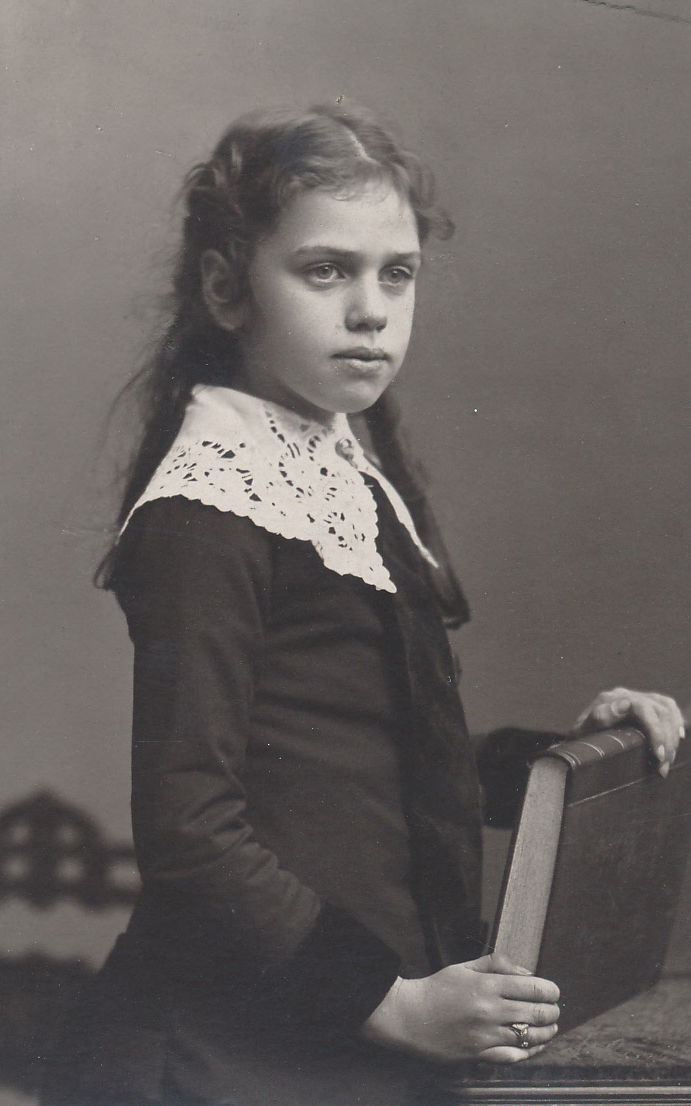
Rose Nichols, ca. 1889. Nichols Family Photograph Collection, 1.63.
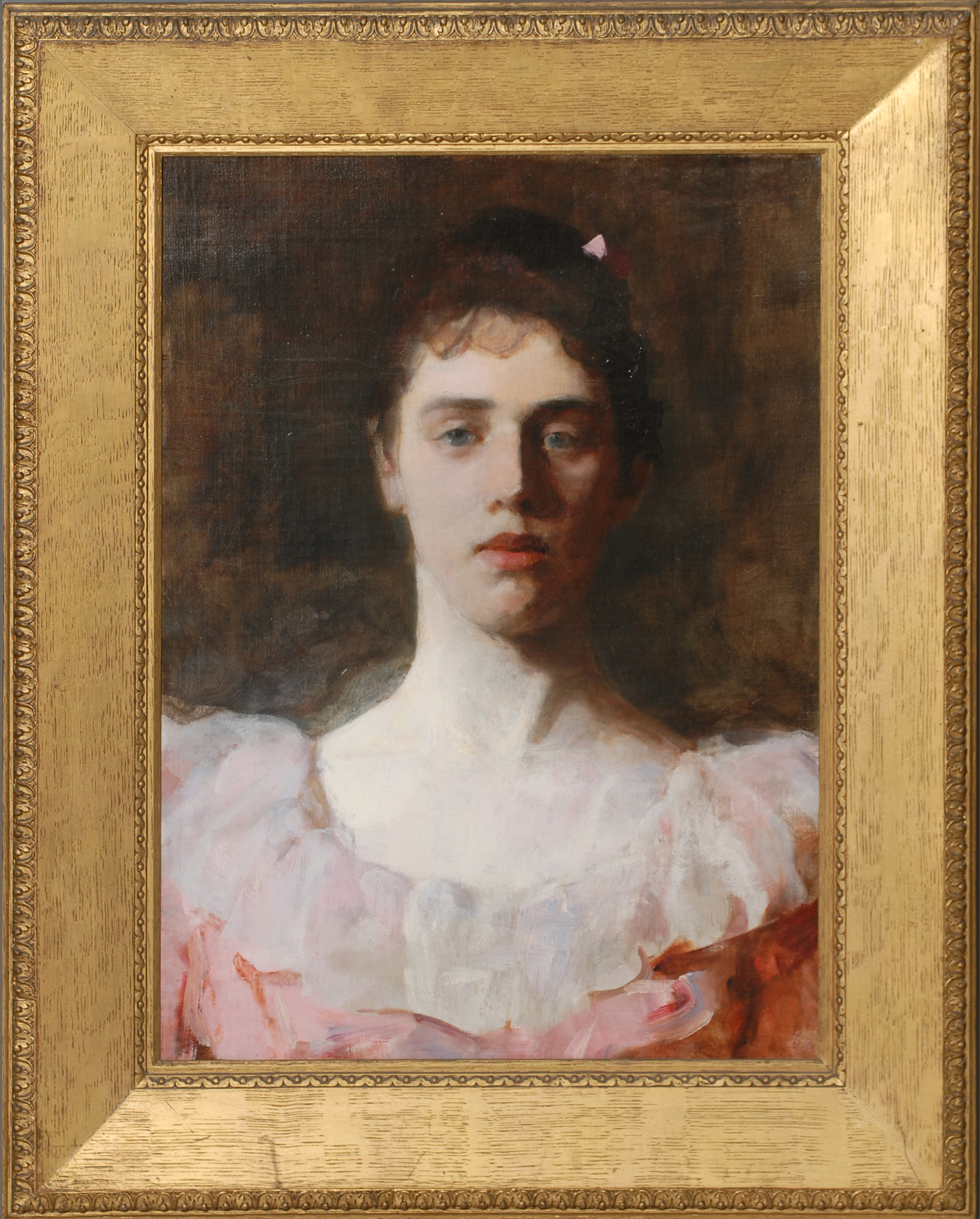
Margarita Pumpelly Smyth (American, 1873-1959), Rose Standish Nichols, ca. 1892. Oil on canvas. Nichols House Museum collection, T-218.
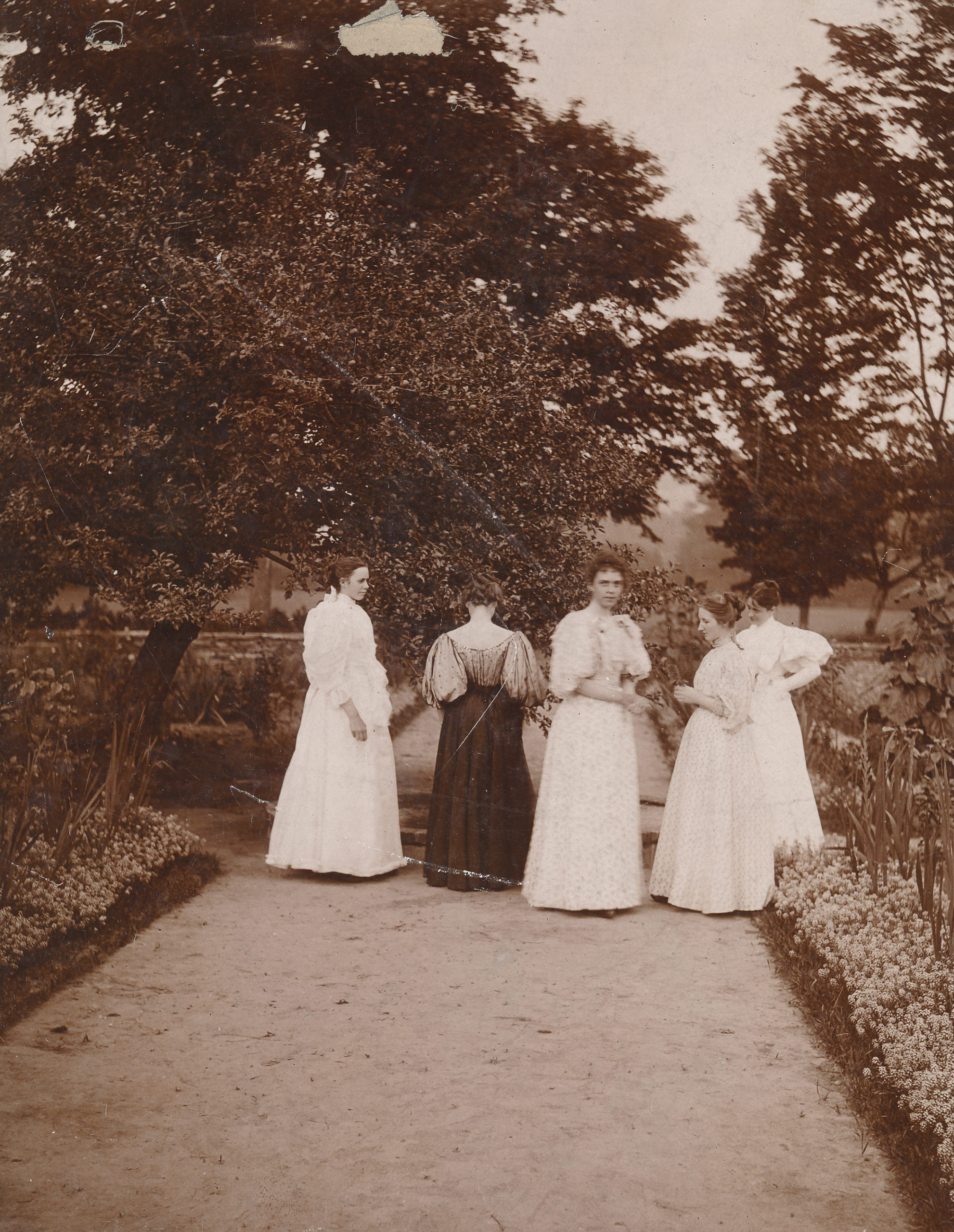
Rose Nichols (center) and Margaret Nichols (far left) in Mastlands garden, ca. 1895. Nichols Family Photograph Collection, 1.124.
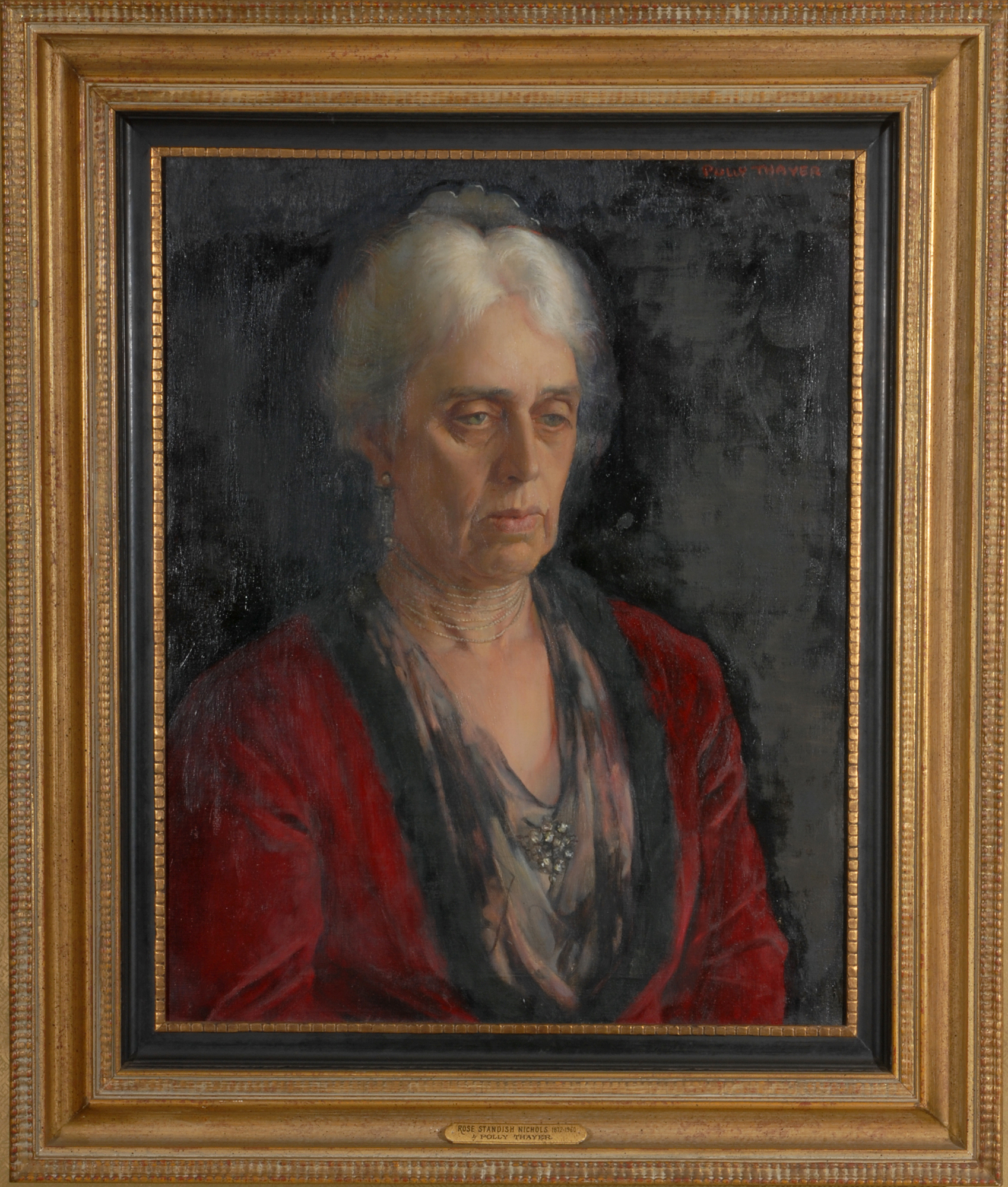
Polly Thayer (American, 1904-2006), Rose Standish Nichols, 1929. Oil on canvas. Nichols House Museum collection, 1961.84.
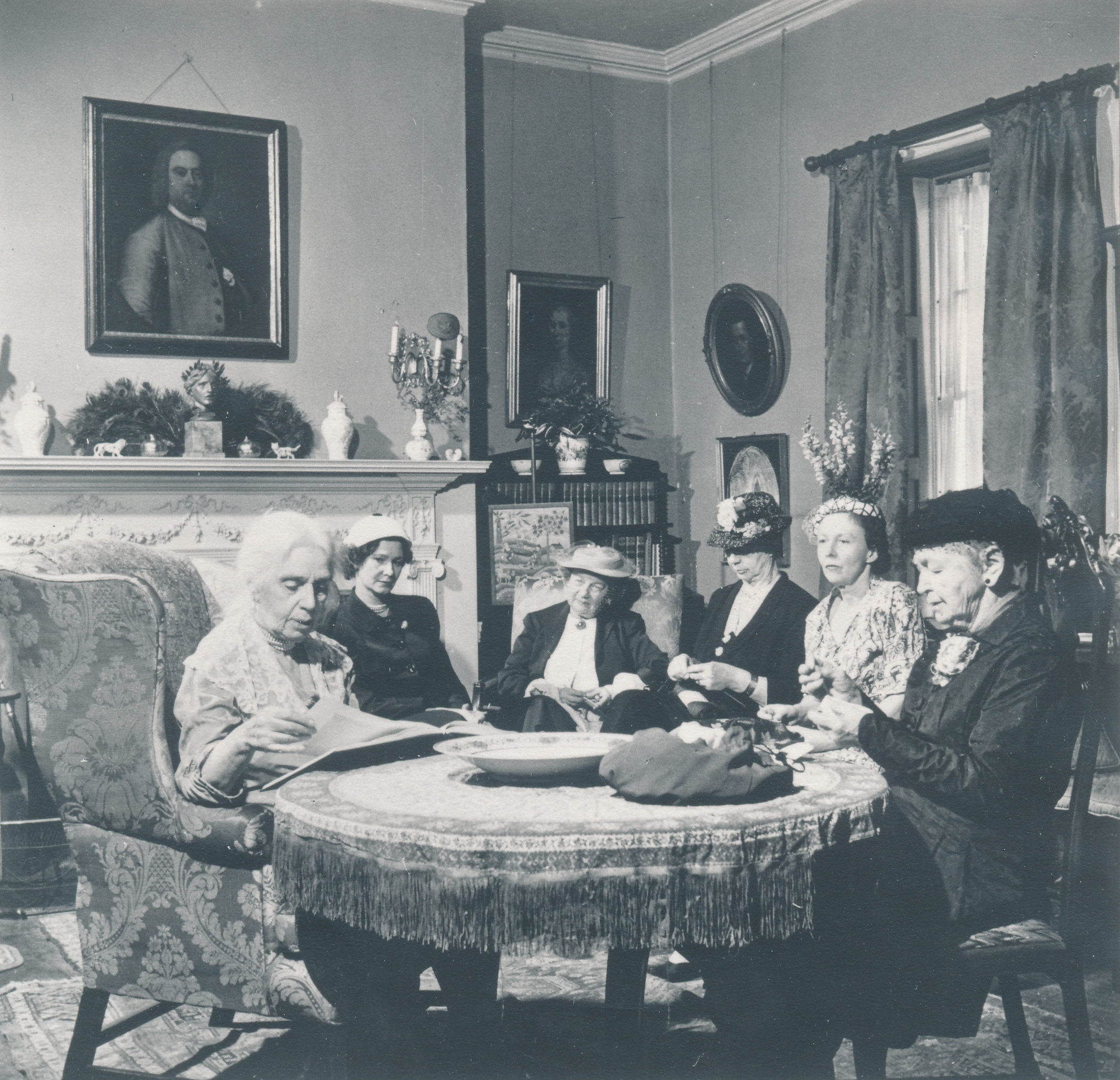
Rose Standish Nichols (far left) hosting a reading club in the parlor at 55 Mount Vernon Street, 1953. Nichols Family Photograph Collection, 1.125.
